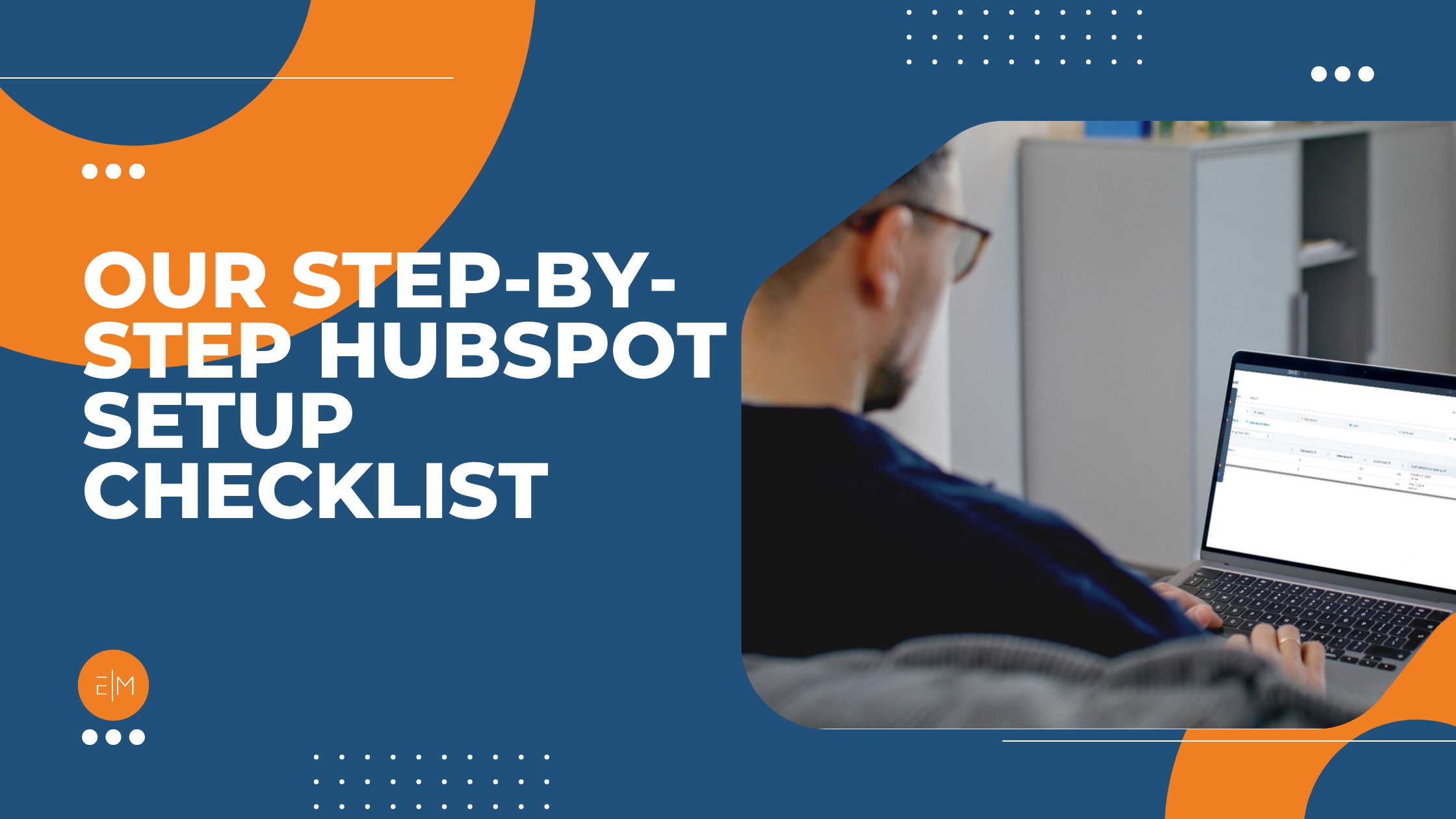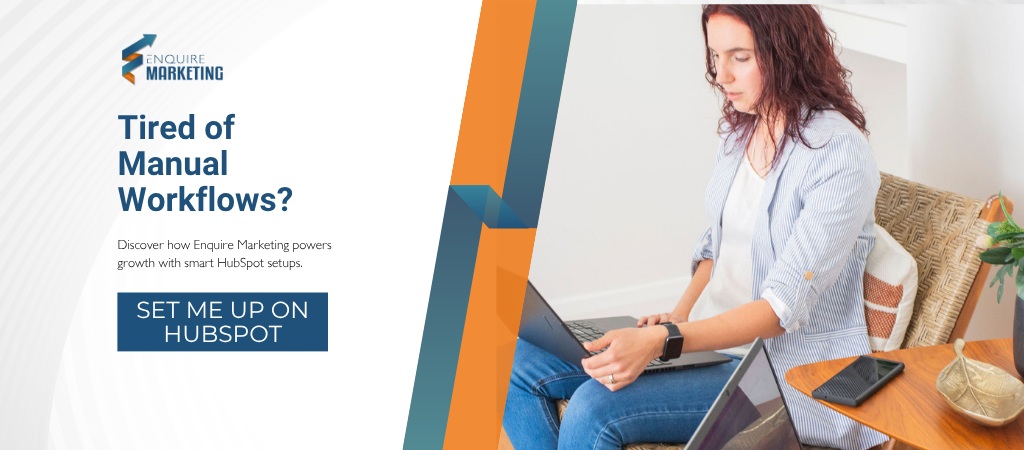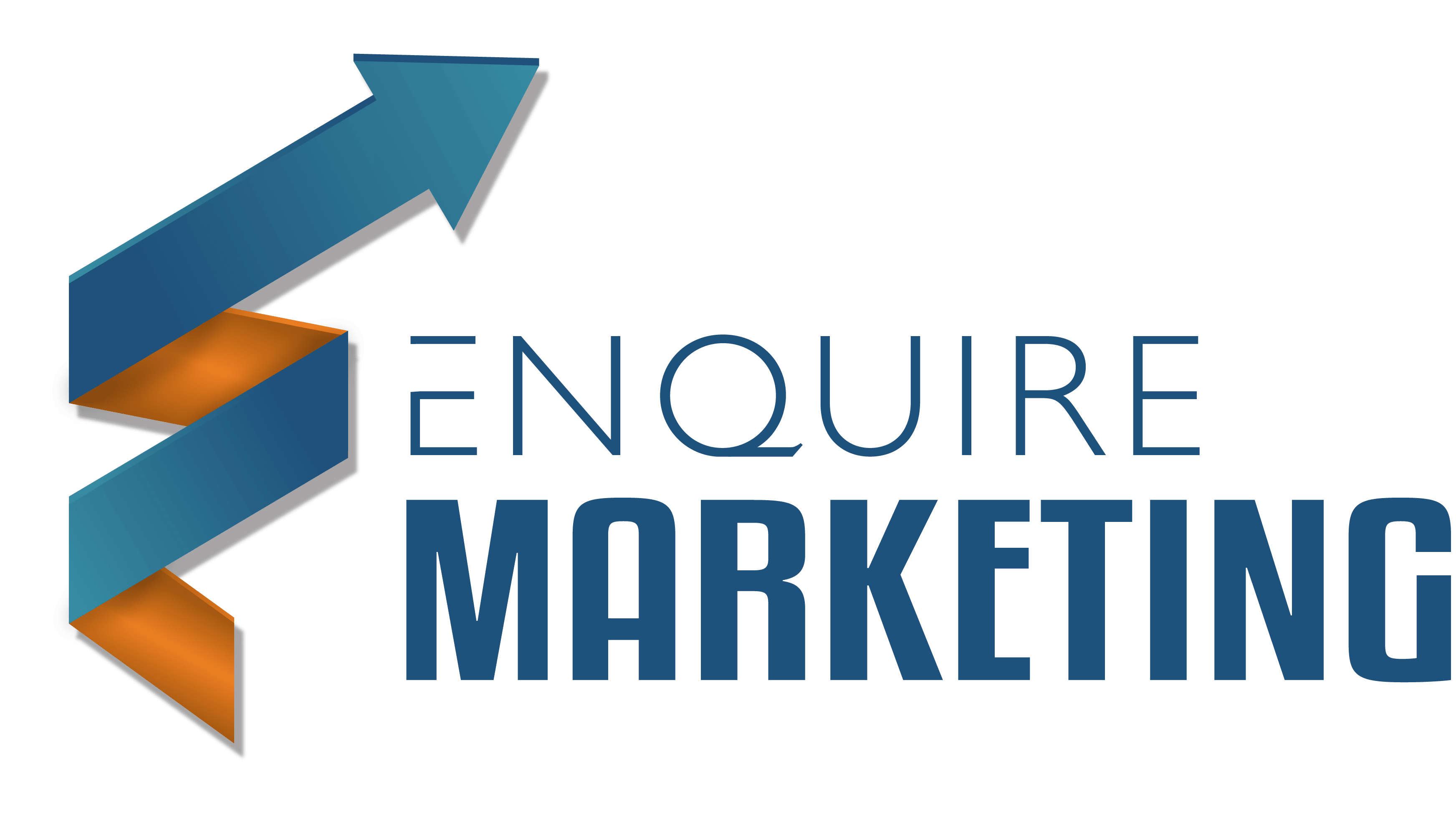
A clean HubSpot build is the difference between tidy, trustworthy data and months of rework. The aim is simple: establish secure access, a resilient data model, and frictionless tools for marketing, sales, and service, then wrap everything in governance so it scales.
The steps below work for organisations that are using or planning to use HubSpot. Follow them in order, and you’ll move from blank canvas to a production-ready platform that captures demand, nurtures relationships, and proves revenue impact.
Foundation: Account, Access, and Security
Identity & Branding
- Add legal entity details, default currency, timezone, and brand colours/fonts in Account Defaults and Brand Kit.
- Connect your primary domain and relevant subdomains (e.g., www, blog, info) for hosting and tracking.
Email & Tracking Trust
- Authenticate outbound email: configure DKIM and update SPF at your DNS; add a bounce domain if available.
- Install the HubSpot tracking code on all web properties, including microsites and landing domains.
- Enable the cookie consent banner; link a plain-English privacy policy and respect regional consent requirements.
Users, Teams, and Permissions
- Create Teams that mirror your org structure (Sales, Marketing, Service, by region or business unit).
- Assign roles and granular permissions; restrict exports and bulk delete to a minimal cohort of trusted admins.
- Enforce two-factor authentication; if on Enterprise, configure SSO and optional IP allow-listing.
Inbox & Calendars
- Connect shared email addresses to Conversations Inbox (e.g., support@, sales@) and route to the right Team.
- Connect personal inboxes and calendars for meetings, logging, and sequences; test bi-directional sync.
Data & CRM Architecture
Lifecycle & Status Taxonomy
- Define Lifecycle Stages (Subscriber → Lead → MQL → SQL → Opportunity → Customer → Evangelist → Other) and what triggers each change.
- Clarify Lead Status (New, Working, Qualified, Disqualified, Nurture) and make it mandatory for sales.
Deal & Ticket Pipelines
- Map deal stages to real-world milestones with exit criteria (evidence required).
- Add a Lost Reason picklist; keep it tidy and actionable.
- For Service Hub, create a Ticket Pipeline with priority, SLA targets, and automation.
Properties & Normalisation
- Create custom properties in organised Property Groups (e.g., ICP Fit, Compliance, Product Interest).
- Use picklists over free text where possible; set default options and validation rules to avoid entropy.
- Document naming conventions for lists, workflows, campaigns, and reports.
Data Ingestion & Hygiene
- Prepare CSVs for Contacts, Companies, Deals, and Tickets; deduplicate by email and company domain.
- Map associations (contact ↔ company, deal ↔ company) before import; run a test import in a small batch.
- Standardise country names, phone formats, and industries. Record data provenance (source, date, owner).
Consent & Subscriptions
- Enable GDPR features: lawful basis, consent capture on forms, and subscription preference centre.
- Create clear subscription types (Marketing, Product Updates, Events, Service Communications).

HubSpot Marketing Setup Essentials
Email & Assets
- Build responsive email templates with brand elements; set defaults for footer, address, and social links.
- Configure double opt-in where appropriate; use smart content for personalisation by lifecycle or region.
- Set email sending domain warm-up expectations for new or low-reputation domains.
Forms, CTAs, and Landing Pages
- Create a global form for standard lead capture plus specialised forms (demo, webinar, content download).
- Turn on progressive profiling to gather data over time without bloating forms.
- Build CTA components (image and button variants) and name them consistently for reporting.
- Spin up landing page templates with SEO-friendly sections, trust badges, and compliant disclosures.
Chat, Bots, and Meeting Links
- Add chatflows for sales and support with sensible business hours and triage rules.
- Provide Meeting Links for key sellers; embed them in CTAs and post-demo emails.
Campaigns, UTM, and Ads
- Use the Campaign object to group related assets; apply a strict naming pattern (YYYY-Region-Product-Theme).
- Define UTM governance; pre-build parameters for Google, LinkedIn, and Meta.
- Connect ad accounts; sync audiences from HubSpot lists and enable offline conversion tracking where supported.
Website & SEO (if using HubSpot CMS)
- Configure blog settings, topic clusters, and language variants.
- Verify GA4 and Search Console integrations; submit sitemaps and check index coverage.
- Add structured data to key templates (Article, FAQ, Breadcrumb).
Sales Tools and Process Enablement
Pipelines, Products, and Quotes
- Finalise the deal pipeline with weighted stages; set up goals by rep and team.
- Build a Product Library with SKUs, currencies, taxes, and discounts; align with finance systems.
- Enable Quotes and, if available in your region, connect Payments for streamlined close.
Playbooks, Templates, Sequences
- Create email templates for qualification, follow-ups, and no-response nudges.
- Build Sequences with personalisation tokens and sensible throttling; provide opt-out clarity.
- Draft Playbooks that prompt reps to capture the right properties during discovery.
Lead Assignment & Scoring
- Implement lead rotation rules by territory, industry, or fit; failover when owners are unavailable.
- Configure lead scoring: combine fit (ICP match) with engagement (form fills, high-intent pages, intent data).
- Trigger MQL conversion and owner alerts at a threshold, then auto-create tasks.
Calling, Logging, and SLAs
- Set up calling and recording where lawful; store consents.
- Encourage disciplined activity logging via HubSpot’s extensions for Gmail and Outlook.
- Define speed-to-lead expectations; build alerts if response times slip.
HubSpot Service & Customer Experience Configuration
Ticketing & Knowledge Base
- Create a ticket intake form and shared support inbox; auto-assign by product or region.
- Build SLAs by priority with escalation paths; monitor breaches on a live dashboard.
- Publish a Knowledge Base with categories, related articles, and feedback thumbs; add search analytics to spot gaps.
Customer Portal & Feedback
- Enable a customer portal where clients can view ticket status and relevant articles.
- Run NPS, CSAT, and CES surveys at key milestones; store verbatim for analysis and marketing proof.
- Close the loop with workflows that alert owners to detractors and create tasks for follow-up.
Success & Expansion
- Create a Success Plan playbook for onboarding checkpoints and adoption metrics.
- Track renewals and expansion opportunities with a dedicated pipeline or custom objects where needed.
Reporting, Governance, and Go-Live (Final Thoughts)
Dashboards that Drive Decisions
- Build role-based dashboards:
- Leadership: pipeline, revenue, CAC, LTV, conversion by stage.
- Marketing: MQLs, campaign ROI, first/last touch and data-driven attribution, list growth, email health.
- Sales: activities, meeting rates, win rate by segment, speed-to-lead.
- Service: SLA attainment, deflection from knowledge base, NPS/CSAT trends.
- Leadership: pipeline, revenue, CAC, LTV, conversion by stage.
- Standardise date ranges and filters; annotate dashboards when major changes occur.
Change Control & Quality Assurance
- Maintain a changelog for workflows, property edits, and permission changes.
- Use sandbox (if available) to test imports, integrations, and automations safely.
- Before go-live, run a QA sprint: form submissions, routing, email personalisation tokens, meeting booking, ticket creation, attribution, and unsubscribe flows.
Data Protection & Compliance
- Confirm lawful basis storage, subscription types, and regional consent rules.
- Configure data retention and deletion processes; restrict exports; audit user access quarterly.
- Publish a concise data use statement so customers understand how telemetry improves their experience.
Enablement & Adoption
- Host short enablement sessions by role; record and store in a central playbook library.
- Write micro-guides: “How to log a call”, “How to update Lead Status”, “How to build a list”.
Go-Live Cue & CTA
You now have a coherent HubSpot environment secure, structured, and measurable, ready to fuel growth across regions.
If you’d like a seasoned partner to audit your build, close any gaps, and accelerate time-to-value, get in touch with us, and we’ll shape a focused, globally ready rollout plan that your team can own with confidence!

